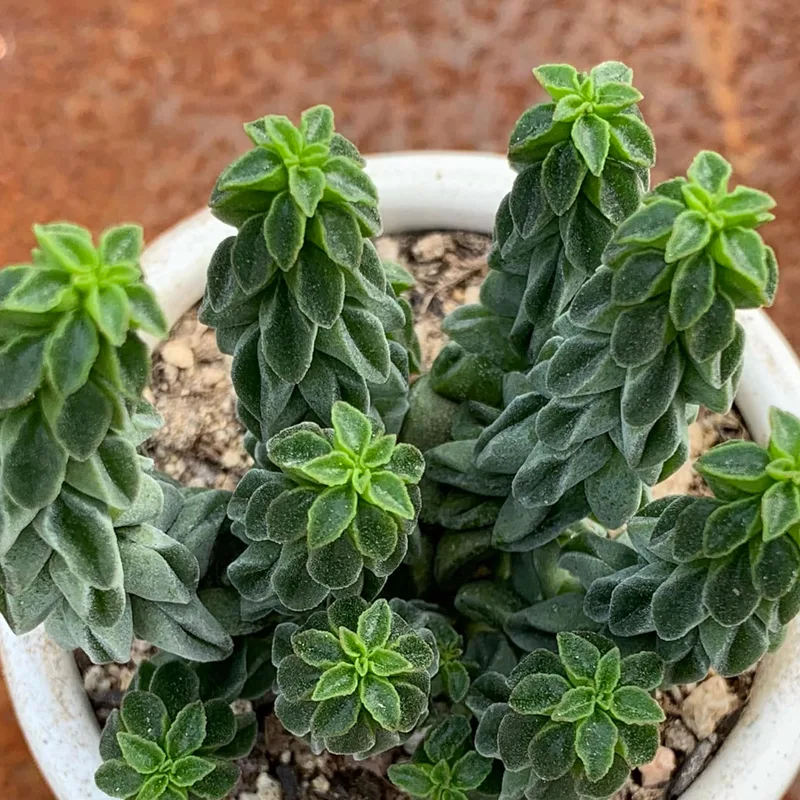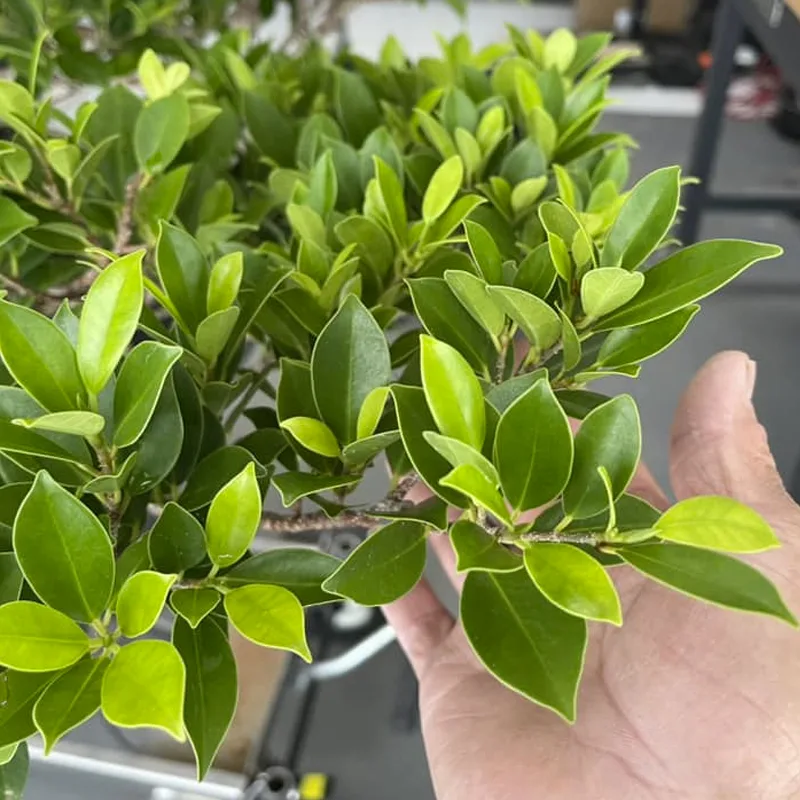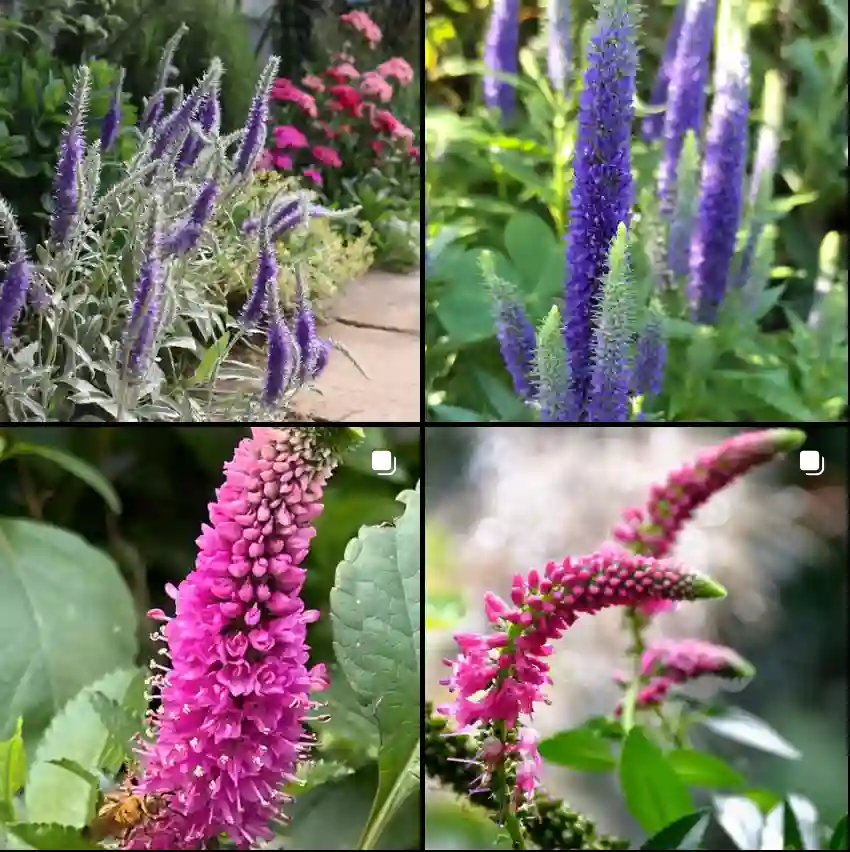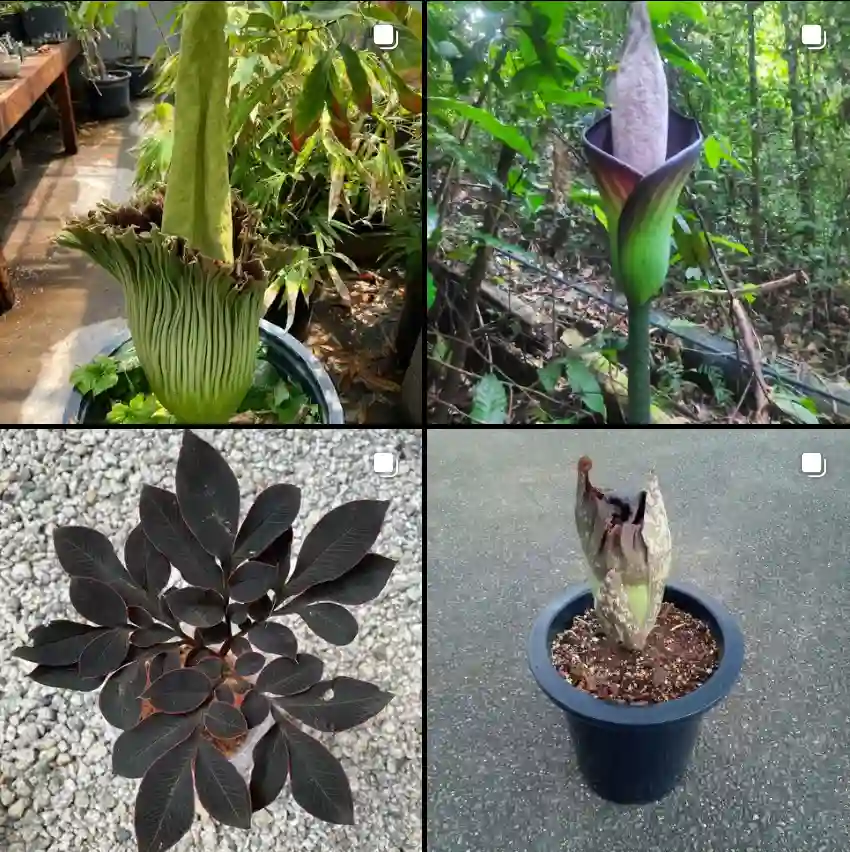The Ctenanthe lubbersiana, often affectionately known as the Golden Mosaic or Never-Never Plant, is a true botanical marvel. Its striking foliage, adorned with vibrant streaks of yellow and cream against a deep green backdrop, brings an undeniable touch of the tropics into any indoor space. More than just a pretty face, this plant also exhibits a fascinating characteristic: its leaves gracefully fold upwards at night, almost as if in prayer, only to unfurl again with the morning light.
This comprehensive guide will delve deep into the world of Ctenanthe lubbersiana, providing you with all the essential knowledge to cultivate a thriving specimen. But beyond the factual care instructions, I invite you to join me on a personal journey—a three-year “time lapse” through the life of my own Golden Mosaic, shared from my perspective as its devoted gardener. We’ll explore the milestones, challenges, and sheer joys of nurturing this exquisite plant from a humble beginning to a lush, mature showstopper.
The Golden Mosaic Unveiled: A Botanical Introduction
Ctenanthe lubbersiana belongs to the Marantaceae family, a group renowned for their highly decorative foliage, which also includes the popular Calatheas and Marantas. Native to the humid, shaded understory of the Brazilian Atlantic rainforests, this plant has evolved to thrive in conditions that mimic its natural habitat: warm temperatures, high humidity, and filtered light. Its unique variegation is not just beautiful but also serves a purpose in its native environment, helping it capture diffused light.
Month 1: The Tiny Sprout – A New Beginning
My journey with the Ctenanthe lubbersiana began quite unassumingly. I remember picking up a small, unassuming pot from a local nursery. It was a young plant, perhaps just a few months old, with only a handful of leaves, each no bigger than my thumb. The variegation was subtle then, more of a promise than a spectacle. I brought it home, carefully placed it on a shelf near an east-facing window, ensuring it received bright, indirect morning light. My first task was to ensure it settled into its new environment without stress. I watered it sparingly, checking the soil daily, and immediately noticed its delicate nature. It felt like holding a tiny, precious secret.
Essential Care for Your Ctenanthe Lubbersiana
Cultivating a healthy Ctenanthe lubbersiana requires attention to detail, but the rewards are well worth the effort. By understanding and replicating its native rainforest conditions, you can ensure your Golden Mosaic flourishes.
Light: The Gentle Embrace of Indirect Rays
The Ctenanthe lubbersiana thrives in bright, indirect light. In its natural habitat, it grows beneath the canopy of taller trees, receiving dappled sunlight rather than harsh, direct rays.
- Ideal Placement: An east-facing window is often perfect, providing gentle morning sun. A few feet away from a south or west-facing window, or directly in a north-facing window, can also work. The key is to ensure the light is filtered.
- Signs of Too Much Light: Direct sunlight will scorch its delicate leaves, leading to brown, crispy patches. The vibrant variegation may also fade, becoming duller.
- Signs of Too Little Light: Insufficient light can cause the plant to become leggy, with sparse growth and longer distances between leaves. The beautiful golden patterns may also revert to a more solid green as the plant tries to maximize chlorophyll production.
- Artificial Light: If natural light is scarce, a grow light can supplement, ensuring the plant receives adequate illumination without the intensity of direct sun.
Months 2-6: Establishing Roots and Unfurling Leaves
The first few months were a learning curve. I quickly realized how sensitive this plant was to its environment. I noticed the edges of some new leaves turning crispy, a clear sign of low humidity. My initial misting efforts weren’t enough. I invested in a small humidifier and placed it nearby, creating a consistent, moist microclimate. The change was almost immediate. New leaves unfurled with a glossy sheen, and the existing ones regained their vibrancy. I also started to observe the fascinating nyctinasty—the leaves folding up at dusk and spreading out again by dawn. It was like a silent, daily greeting, a testament to its health and happiness.
Watering: The Art of Consistent Moisture
Watering is perhaps the most critical aspect of Ctenanthe care. These plants prefer consistently moist, but never soggy, soil.
- Frequency: Water when the top 1-2 inches (2.5-5 cm) of soil feel dry to the touch. This might mean watering every 3-7 days, depending on your environment, pot size, and soil mix. Always check the soil before watering.
- Water Quality: Ctenanthes are notoriously sensitive to the chemicals (chlorine, fluoride) and mineral salts found in tap water. Using filtered water, distilled water, or collected rainwater is highly recommended to prevent brown leaf tips and edges. If using tap water, let it sit out for 24 hours to allow chlorine to dissipate.
- Avoid Overwatering: Soggy soil leads to root rot, a common killer of Ctenanthes. Ensure your pot has excellent drainage holes. Signs of overwatering include yellowing leaves, mushy stems, and a general lack of vigor.
- Avoid Underwatering: Allowing the soil to dry out completely will cause the leaves to curl inwards (a defense mechanism to conserve moisture) and develop crispy, brown edges. The plant can recover from occasional dryness more easily than from overwatering, but consistent underwatering will lead to decline.
- Winter Watering: During the cooler, darker months, the plant’s growth slows down, and it requires less water. Adjust your watering frequency accordingly, allowing the soil to dry out a bit more between waterings.
Year 1: Lush Growth and First Challenges
By the end of the first year, my Ctenanthe lubbersiana had transformed from a small sprout into a respectable, bushy plant. Its leaves were larger, and the golden mosaic pattern was truly stunning. It had put out several new stems, and I felt a sense of pride watching it thrive. However, the increased foliage brought new challenges. I spotted tiny webs on the undersides of some leaves—spider mites! It was a frustrating setback. I immediately isolated the plant and began a regimen of wiping down the leaves with a damp cloth and applying insecticidal soap. It took persistence, but I managed to eradicate them, learning the importance of regular pest inspection.
Humidity: Replicating the Rainforest Mist
Given its rainforest origins, high humidity is non-negotiable for a thriving Ctenanthe lubbersiana. Aim for humidity levels between 50% and 70%.
- Humidifiers: The most effective way to provide consistent high humidity, especially in dry indoor environments (common during winter with heating systems).
- Pebble Trays: Place the pot on a tray filled with pebbles and water. Ensure the bottom of the pot does not sit directly in the water, as this can lead to root rot. As the water evaporates, it increases humidity around the plant.
- Misting: While misting provides a temporary boost in humidity, it’s not a long-term solution. It can also encourage fungal issues if done improperly or if air circulation is poor. If you do mist, use filtered water and ensure good airflow.
- Grouping Plants: Plants release moisture through transpiration, so grouping several plants together can create a localized humid microclimate.
- Signs of Low Humidity: Brown, crispy leaf edges and tips are the most common indicators. Leaves may also curl or appear dull.
Temperature: Warmth Without Extremes
Ctenanthe lubbersiana prefers warm, stable temperatures, mirroring its tropical home.
- Ideal Range: Keep temperatures between 18-27°C (65-80°F).
- Avoid Cold Drafts: These plants are highly sensitive to sudden temperature drops and cold drafts. Keep them away from open windows, air conditioning vents, and exterior doors, especially during colder months.
- Avoid Heat Vents: Similarly, direct blasts of hot, dry air from heating vents can quickly dehydrate the plant and cause leaf damage.
- Winter Care: If temperatures drop significantly in your home during winter, consider moving your Ctenanthe to a warmer spot or providing supplemental warmth.
Year 2: Flourishing and Expanding
The second year saw my Golden Mosaic truly come into its own. It was a magnificent specimen, nearly three feet tall and wide, with a dense canopy of variegated leaves. It had even produced a few inconspicuous, cream-colored flowers, a rare treat for an indoor Ctenanthe! The plant was becoming quite root-bound in its 10-inch pot, and I knew it was time for a repotting. I chose a slightly larger pot, prepared a fresh, airy soil mix, and carefully transferred it. The process was a bit nerve-wracking, but the plant bounced back quickly, pushing out even more vigorous growth.
Soil: The Foundation of Health
A well-draining yet moisture-retentive soil mix is crucial for Ctenanthe lubbersiana. It needs to hold enough moisture to keep the roots hydrated but drain quickly to prevent waterlogging.
- Ideal Mix: A good quality indoor potting mix amended with ingredients like perlite, orchid bark, or coco coir works well. A common recommendation is a mix of coco peat and perlite in a 3:1 ratio.
- Drainage: Ensure the pot has ample drainage holes. You can add a layer of perlite or small pebbles at the bottom for extra drainage, though the most important factor is a well-draining mix throughout.
- pH Level: Ctenanthes generally prefer a slightly acidic to neutral soil pH, typically between 6.1 and 7.5.
Fertilization: A Gentle Boost
During its active growing season (spring and summer), your Ctenanthe will benefit from regular, diluted fertilization.
- Type: Use a balanced liquid houseplant fertilizer (e.g., 10-10-10 N-P-K).
- Frequency: Fertilize once a month, diluted to half the strength recommended on the product label. Over-fertilization can burn the roots.
- Winter: Reduce or cease fertilization during the fall and winter months when the plant’s growth naturally slows down.
- Repotting: Avoid fertilizing immediately after repotting. Wait at least 6 weeks to allow the plant to settle and its roots to recover.
Repotting: Giving Room to Grow
Ctenanthe lubbersiana generally needs repotting every 1-2 years, or when it becomes root-bound.
- When to Repot:
- Roots are circling the inside of the pot or growing out of the drainage holes.
- The plant appears top-heavy or unstable.
- Growth has slowed significantly despite optimal care.
- The soil is compacted and no longer drains well.
- Timing: The best time to repot is during spring or early summer, at the beginning of its active growing season.
- Pot Size: Choose a pot that is only one size larger than the current one (e.g., from a 6-inch to an 8-inch pot). Too large a pot can hold excess moisture, leading to root rot.
- Process: Gently remove the plant from its old pot. Loosen any circling roots. Trim any old, mushy, or damaged roots. Place a layer of fresh, well-draining soil mix in the new pot, center the plant, and backfill with more soil, gently tamping it down to remove air pockets. Water thoroughly after repotting.
Year 3: Sharing the Bounty and Continued Care
As my Ctenanthe entered its third year, it was magnificent. It had truly become a focal point in my living space. The dense foliage, the rhythmic leaf movements, and the vibrant mosaic pattern brought so much life to the room. It was also producing numerous new shoots from its base, indicating it was ready for division. I carefully separated a few healthy clumps, each with its own root system, and potted them up for friends. It was incredibly satisfying to share the beauty of this plant, knowing I had nurtured it from a small, fragile specimen into a thriving, self-propagating entity. I continued my routine of consistent watering with filtered water, maintaining high humidity, and providing bright, indirect light. It’s a testament to patience and consistent care.
Propagation: Expanding Your Golden Mosaic Collection
Propagating Ctenanthe lubbersiana is a rewarding way to create new plants or share with friends. The most common and successful method is division.
Division
- Best Time: Spring or early summer, during repotting.
- Process:
- Carefully remove the mother plant from its pot.
- Gently tease apart the root ball, looking for natural divisions where individual stems or clumps of stems have their own root systems.
- Using a clean, sharp knife or your hands, carefully separate these clumps, ensuring each new section has a healthy portion of roots and at least a few leaves.
- Pot each division into its own small pot (e.g., 4-6 inches) with fresh, well-draining potting mix.
- Water thoroughly and place in a warm, humid spot with bright, indirect light. Keep the soil consistently moist as the new plants establish.
Stem Cuttings (Less Common but Possible)
While division is preferred, Ctenanthe lubbersiana can also be propagated from stem cuttings, especially from varieties that produce more pronounced above-ground branching stems.
- Process:
- Take a healthy stem cutting about 4-6 inches long, ensuring it has at least 2-3 nodes (the points where leaves emerge).
- Remove any leaves from the bottom node(s).
- You can place the cutting in water (changing water every few days) or directly into a moist, well-draining rooting medium (like a mix of perlite and peat).
- Place the cutting in a warm, humid environment with bright, indirect light. A propagation dome or plastic bag can help maintain humidity.
- Roots should start to form within a few weeks. Once a good root system has developed, pot the cutting into soil.
Common Problems and Troubleshooting
Even with the best care, Ctenanthe lubbersiana can sometimes show signs of distress. Understanding these signals is key to quickly addressing issues.
- Crispy, Brown Leaf Edges/Tips:
- Cause: Most commonly low humidity, but also underwatering or chemicals in tap water.
- Solution: Increase humidity with a humidifier or pebble tray. Use filtered/distilled water. Ensure consistent watering.
- Yellowing Leaves:
- Cause: Overwatering (most common), nutrient deficiency, or natural aging of older leaves.
- Solution: Check soil moisture before watering. Ensure good drainage. If soil is soggy, repot into fresh, drier soil. If not overwatering, consider a balanced fertilizer during the growing season.
- Curling Leaves:
- Cause: A sign of water stress – either too much or too little water. The plant curls its leaves to conserve moisture when dry, or to escape overly wet conditions.
- Solution: Check soil moisture. If dry, water thoroughly. If soggy, allow to dry out more or repot.
- Fading Variegation or Solid Green Leaves:
- Cause: Insufficient light. The plant is producing more chlorophyll to compensate for low light, reducing the colorful patterns.
- Solution: Move the plant to a brighter spot with more indirect light.
- Leggy Growth:
- Cause: Not enough light.
- Solution: Provide more bright, indirect light. Pruning can encourage bushier growth.
- Pests (Spider Mites, Mealybugs, Aphids):
- Signs: Small webs, sticky residue (honeydew), tiny moving dots, white cottony masses.
- Solution: Isolate the plant. Wipe leaves with a damp cloth. Use insecticidal soap or neem oil according to product instructions. Regular inspection helps catch infestations early.
- Root Rot:
- Cause: Persistent overwatering and poor drainage.
- Signs: Yellowing, drooping leaves, mushy stems, foul odor from soil.
- Solution: Act quickly. Remove the plant from its pot, inspect roots. Trim off any brown, mushy, or rotten roots with sterile scissors. Repot into fresh, well-draining soil in a clean pot (or smaller if many roots were removed). Reduce watering frequency.
The Enduring Appeal of the Golden Mosaic
Beyond its stunning appearance, the Ctenanthe lubbersiana offers several benefits that make it a cherished houseplant. It’s known for its air-purifying qualities, helping to remove common indoor toxins. Its vibrant foliage adds a dynamic aesthetic to any room, and its unique leaf movement provides a subtle, living spectacle.
While some sources vary on its toxicity, most agree it is generally considered non-toxic to pets and humans. However, as with any houseplant, it’s always wise to keep it out of reach of curious pets and small children to prevent any mild gastrointestinal upset if ingested.
In conclusion, the Ctenanthe lubbersiana is a rewarding plant for those willing to provide it with the consistent care it craves. By mimicking its rainforest home – providing bright, indirect light, consistent moisture with quality water, and high humidity – you can enjoy the vibrant beauty of this Golden Mosaic for many years to come. My own three-year journey with this plant has been a constant source of wonder and a reminder of the intricate beauty of the natural world, right within my home.
If i die, water my plants!



